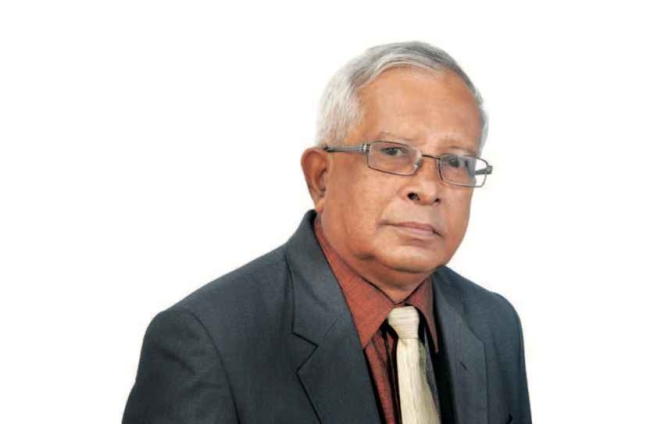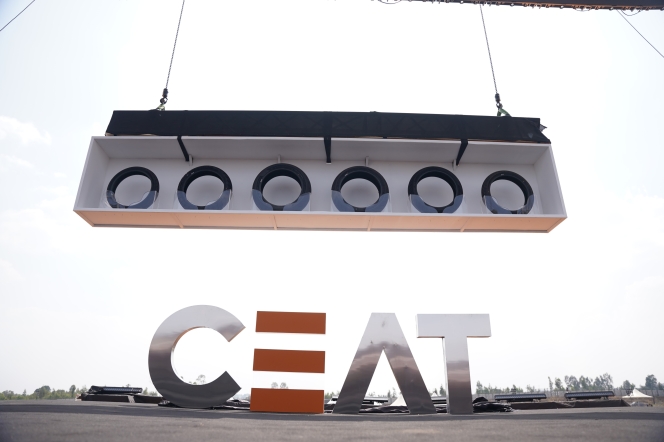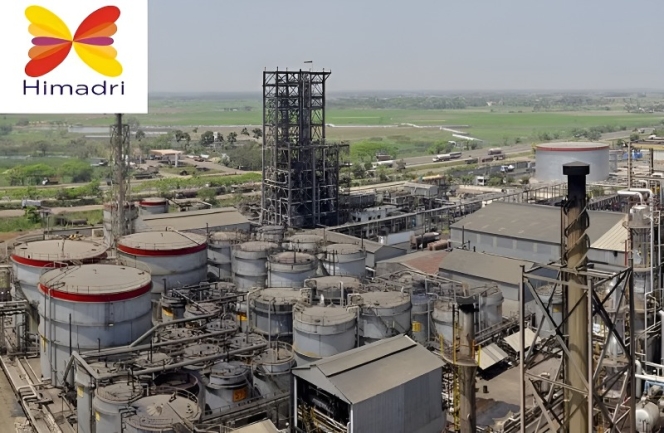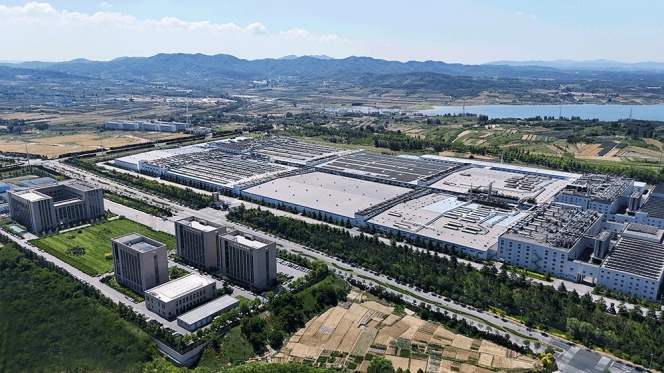
The Plastics and Rubber Institute of Sri Lanka, and the Sri Lanka Association of Manufacturers and Exporters of Rubber Products, together with the assistance of the Export Development Board, conducted a two- day virtual workshop on Advanced Technology/Smart Manufacturing For The Rubber Product Industry In Sri Lanka, in December 2020. Despite the fact that the country was just raising its head from the deleterious aftermath of the first and second waves of Covid -19, the participation was beyond all expectations, thus indicating the weightage placed in keeping abreast of modern trends and moving with times by the industry community and the professionals and I presume that this is the current trend throughout the world.
As a member of the organising committee of the event and more as a hands-on person of the technologists of the not so modern generation, I realised that I was a curious and a rather passive observer of the currently fast unfolding industry scenario. The array of topics presented by local as well as overseas experts on their respective specialties was impressive. They covered Smart Energy Monitoring, IOT Built Industry Automation, Big Data Processing and applications, Conditioned based Monitoring for Maintenance, 3D/4D Printing, Virtual Product Design and Testing, Finite Element Analysis, and Product Failure Analysis.
It made me guessing with fascination, how much the information utilisation scenario in the manufacturing industry has metamorphosed during the past few decades since the times of two great discoveries/inventions, of Charles Babbage and Arthur. C. Clarke, that paved way for the evolution of the Information and Communications revolution. Charles Babbage (1791-1871) was an extraordinarily talented scientist, mathematician, economist and engineer. He is best known today - as he was in his lifetime - for inventing two types of cogwheel calculating machines, the forerunners of the modern computers. It was Arthur C. Clarke. after the crest of World War II, from his base in Stratford-On-Avon, England, as a young officer in the Royal Air Force, who dabbled in science fiction writing, floated the idea of global communications satellites in a 1945 letter to the publication Wireless World. It will be of interest to learn that the latter made Sri Lanka his second home and contributed in no small way to the development of ICT and astronomy in our country during the sixties and seventies.
As I gathered, with my rather limited knowledge of ICT, that the common features, of the modern-day innovations are generating a vast amount of real time data on all key aspects of the value chain, and interfacing between the value adding activities. Automation and reducing the dependability on the human factor has been another significant trend. Another key driver has been the necessity for reliability, agility and robustness in delivering products and services to the customer in the ever-changing customer preferences, which are again fueled willfully through product promotion and creation of new needs through massive adverting campaigns and mass communications. Companies are increasingly embracing the innovative technologies, to enable business growth, wealth accumulation, contribution to the national economies, which has helped in achieving improved quality of life, particularly in the traditionally termed developed countries.
Right through his anthropogenic evolution, Homo Sapiens or the “thinking man” has been characterised by the use of his brain to find easier and faster ways of doing things, which was an absolutely vital advantage for his survival in the primitive hostile environment. Commencing with use of stone tools, discovery of fire, and iron, this trend has continued throughout the history of mankind. During the more recent period of the last three centuries, which culminated in the Industry 4.0, some key landmarks, which reflect the quest of the mankind to better lives, through increased and efficient resource utilisation can be identified.

Revolutions
This process began in Britain in the 18th century and from there spread to other parts of the world. Although used earlier by French writers, the term Industrial Revolution was first popularised by the English economic historian Arnold Toynbee (1852–83) to describe Britain's economic development from 1760 to 1840. The first industrial revolution came with the advent of mechanisation, steam power and water power. This was followed by second industrial revolution which revolved around mass production and assembly lines using electricity. Henry Ford’s conveyor belt system was put into motion in December 1st of 1913 in his Detroit manufacturing plant. Fully mechanised, or partially mechanised, assembly lines allowed Ford to offer a vehicle for a working family. One of his goals was to have a car that every family could own.
The car that every family would soon come to own was the Model T. His manufacturing plants would go on to produce over 15 million Model Ts and this is due almost entirely to his assembly line. In order to achieve a production of the Model T at such a high rate, he needed to break down the process of assembling the car to make it as efficient as possible to produce, while still being financially accessible.
The third industrial revolution came with electronics, IT systems and automation, which led to the fourth industrial revolution that is associated with cyber- physical systems. Some of the principles of which were the topics of the December Workshop. Generally speaking, Industry 4.0 describes the growing trend towards automation and data exchange in technology and processes within the manufacturing industry, including:
- The internet of things (IoT)
- The industrial internet of things (IIoT)
- Cyber-physical systems (CPS)
- Smart manufacture
- Smart factories
- Cloud computing
- Cognitive computing
- Artificial intelligence
This automation creates a manufacturing system whereby machines in factories are augmented with wireless connectivity and sensors to monitor and visualise an entire production process and make autonomous decisions. Wireless connectivity and the augmentation of machines will be greatly advanced with the full roll out of 5G
The fourth industrial revolution also relates to digital technologies that can create virtual versions of real-world installations, processes and applications. These can then be robustly tested to make cost-effective decentralised decisions. In short, this should allow for digital transformation and for automated and autonomous manufacturing with joined-up systems that can cooperate with each other.
Black spots
It can thus be unanimously agreed that the emerging technologies have already resulted in tremendous benefits for mankind and that they have vast future potential in changing the entire human civilisation. While appreciating and accepting the usefulness of the technologies, I cannot refrain from contemplating on the black spots in the white cloth. The disadvantages of the digital technologies have been well documented throughout the world and some of these, include, data security, digital media manipulation, job insecurity, over reliance on gadgets, addiction, depersonalization, and social alienation, and stress related physical and mental illnesses and the list is not exhaustive. Diminishing of the human touch is considered by many, as a matter of grave concern, and its effect on the personal, ethical, family and social has already begun to reveal its dark side.
As an adaptive measure of the new normal mentality that followed the Covid-19 pandemic, “Social Distancing” intruded our day to day activates over the past one and half years. However, on thinking reflectively, it will be evident that Social Distancing actually had its beginnings in the first three industrial revolutions, while it got aggravated in the recent years. Dilemmas and debatable questions as to whether dehumanisation is still progressing and what will be the outcome, if the current rate of rapid technology trend continues? These will become key challenges for the sociologists and sociopsychologists and the modern HR specialists. Prioritising automation and sub optimisation of the human resource, in the disguise of improving operational efficiency, as a business strategy of maintaining sustainability, could turn out to be short lived.
Over dependence on technology at the expense of losing the much-required human touch and interpersonal relationships, can be witnessed in many of the day-to-day activities, such as internet or online banking, bill payments, buying at super markets, home deliveries, and on-line webinars. I have personal experience of the short comings of on-line lecturing for students and on virtual workshops, which can only be utilised as a stop gap measure. As a person of the “old generation,” I find it an exhilarating experience to walk to the local bank, greet good morning to the staff, and having a friendly chat with the familiar cashier, while getting my transaction done. Some may equate such practices to lack of time management and productivity. Human interaction of this kind holds a special position in countries such as India and Sri Lanka, which has rich religious and cultural heritages, and adopting the new technologies as a panacea for improving all the aspects of efficiency and productivity in an effort be stay competitive can only be a short-term strategy.
It was Robert Frost, the American poet (1874-1963), who once philosophically remarked, “don’t ever take fence down, until you know why it was put up”
Obsolescence due to ineffective use or total non -use which we witness with machinery and equipment, may be applicable to the humans as well. It is said that the human body has about one hundred, vestigial organs, including the appendix, which have become nonfunctional, during the evolutionary process as a result on non-use and obsolescence. (TT)
Vredestein Quatrac Pro 2 UHP All-Season Tyre Set For Summer 2026 Launch
- By TT News
- January 22, 2026

Apollo Tyres is preparing to introduce the Vredestein Quatrac Pro 2, a next-generation ultra-high-performance all-season tyre slated for release in the summer of 2026. This product is engineered with a completely new architecture, innovative materials and an advanced directional tread to achieve leading performance standards. It is specifically designed for compatibility with contemporary electric and hybrid vehicles, offering low rolling resistance and minimal noise alongside a reinforced structure to accommodate their greater weight without compromising dynamic response.
This breakthrough tyre is conceived as a versatile, performance-focused option suitable for a broad range of vehicles, including sports cars, high-performance saloons and SUVs, and will be available in a wide selection of sizes. The launch continues the Vredestein brand's longstanding leadership in the all-season category, a segment it has helped define since the 1990s and where it currently offers the most comprehensive product range.
CEAT Reports Strong Q3 Growth As Margins Improve And Capex Accelerates
- By Sharad Matade
- January 22, 2026

CEAT Ltd reported strong growth in the December quarter, supported by higher volumes, improving operating margins and continued investment in capacity expansion, while flagging near-term pressure from currency movement and raw material costs.
The tyre maker posted consolidated revenue of INR 41.57 billion for the third quarter of FY26, up about 26 percent year on year. Standalone revenue rose 20.1 percent to INR 39.57 billion, driven by growth across replacement, OEM and international markets.
“This was a good Q3 for us, with more than 20 per cent year-on-year growth on a standalone basis,” said Arnab Banerjee, Managing Director and Chief Executive Officer. “Volume momentum continued across segments, supported by GST rationalisation, improving consumer sentiment and steady recovery in OEM demand.”
Demand outlook remains supportive
Management said the Indian tyre market entered calendar 2025 on a stronger footing, aided by tax reforms, rising electric vehicle adoption and premiumisation. CEAT expects the industry to deliver healthy single-digit growth over the medium term.
“Increasing disposable income in rural markets following robust rabi sowing and kharif harvest completion has been supportive,” Banerjee said, adding that replacement demand for truck and bus radials is expected to remain in the mid-to-high single digits, with seasonal upside during the summer months.
Two-wheeler tyres continued to perform strongly, while OEM demand for medium and light commercial vehicles recovered following GST rationalisation. Passenger vehicle demand is expected to grow at double-digit rates in the near term, supported by easing financing conditions.
International demand for radial commercial vehicle and passenger car tyres remained firm, with India emerging as a credible sourcing base for global OEMs and distributors.
Margins improve despite cost headwinds
Standalone EBITDA rose to INR 5.56 billion, translating into a margin of 14.1 per cent. Consolidated EBITDA stood at INR 5.68 billion, with margins improving both sequentially and year on year.
Gross margins, however, contracted sequentially by about 109 basis points, largely due to currency depreciation and inventory adjustments.
“The depreciation of the rupee and a modest rise in international natural rubber prices could result in a 1 to 1.5 per cent cost headwind over the next few quarters,” said Kumar Subbiah, Chief Financial Officer. “While crude-linked inputs remain stable, currency remains the key variable to watch.”
Standalone profit after tax came in at INR 1.92 billion, compared with INR 2.02 billion in the previous quarter. The decline reflected a one-time provision of INR 578 million linked to new labour code implementation.
“This provision largely relates to past service costs,” Subbiah said. “The ongoing quarterly impact going forward is expected to be minimal.”
Camso integration on track
CEAT said the integration of its Camso off-highway tyre business is progressing broadly as planned. Quarterly revenue stood at about USD 20 million, reflecting the ongoing transition of customer relationships from Michelin to CEAT.
“Most existing customers have approved the business transfer, ensuring continuity,” Banerjee said. “There are some one-time transition and IT costs in Q3, which will not recur from Q4 onwards.”
Management said underlying operating margins at Camso are already in double digits and are expected to improve further as utilisation rises and CEAT gains greater control over sourcing and sales.
Capex remains elevated
Capital expenditure during the quarter stood at INR 2.54 billion, taking cumulative spend for the year to INR 6.73 billion, excluding acquisition-related intangibles.
The board approved an additional INR 13.14 billion investment at the Chennai plant to add 3.5 million passenger car tyres of annual capacity, with completion targeted for the second half of FY28. The project will be funded through a mix of internal accruals and debt.
“Our capex guidance remains broadly in line with earlier estimates,” Subbiah said. “We will continue to monitor leverage closely to ensure balance sheet strength.”
Standalone gross debt stood at INR 29.54 billion, with debt-to-EBITDA improving to 1.25 times.
EV, premiumisation and sustainability
CEAT maintained a strong position in electric vehicle tyres, with more than 30 per cent share in OEM passenger EV tyres and about 20 per cent in two-wheeler EVs. The company continues to invest in premium products, including larger rim-size, run-flat and ZR-rated tyres, to improve realisations.
On sustainability, CEAT announced a partnership with CleanMax to develop 59 MW of hybrid wind-solar capacity, targeting about 60 per cent renewable energy usage by FY27.
“Q3 closed on a strong note, supported by a robust product pipeline and improving customer confidence,” Banerjee said. “We remain focused on sustaining growth while maintaining margin discipline and investing for the long term.”
Himadri Speciality Chemical Steps Up Investment-Led Expansion As Profits Climb
- By Sharad Matade
- January 22, 2026

Himadri Speciality Chemical Ltd reported a sharp rise in profit for the quarter and nine months ended 31 December 2025, supported by margin expansion and accelerating investment across speciality carbon black capacity, export infrastructure and downstream materials.
The Kolkata-based speciality chemicals group said profit after tax for the nine months rose to INR 5.6 billion, exceeding the full-year profit recorded in FY25. Earnings before interest, tax, depreciation and amortisation increased to INR 7.3 billion, reflecting stronger operating leverage and a shift towards higher value-added products, despite softer revenue.
Revenue for the nine-month period stood at INR 33 billion, while total sales volumes increased by about three percent year on year to 428,572 tonnes. The company said its product mix remained focused on speciality and application-specific offerings, supporting profitability amid market volatility.
For the December quarter, consolidated EBITDA rose about 12 percent year on year to INR 2.5 billion, while profit after tax increased 36 percent to INR 1.9 billion, underlining continued margin improvement.
Investment-led expansion remains central to Himadri’s growth strategy. During the quarter, the company commenced trial production at its brownfield speciality carbon black expansion project at Mahistikry. Once fully operational, the project will increase total speciality carbon black capacity to 130,000 tonnes per annum, positioning Mahistikry as the world’s largest single-site facility for speciality carbon black. The project involves an estimated capital expenditure of INR 2.2 billion and is aimed at premium applications including plastics, inks, coatings and other niche segments.
Himadri also commissioned a high-temperature liquid coal tar pitch terminal at New Mangalore Port, creating a second export corridor alongside Haldia on India’s eastern coast. During the quarter, the company executed its first export shipment of 3,600 tonnes of liquid pitch to the Middle East. Management said the new terminal enhances logistics flexibility, reduces concentration risk and supports export-led growth in coal tar derivatives.
Beyond core expansions, the company continues to deploy capital across multiple growth platforms funded largely through internal accruals. These include forward integration into speciality chemicals such as anthraquinone and carbazole, with planned capital expenditure of INR 1.2 billion, as well as phased investments in lithium-ion battery materials, including a lithium iron phosphate cathode active material plant targeted for commissioning from FY27.
During the quarter ended 31 December 2025, upon receipt of INR 2.4 billion in balance consideration from promoters, Himadri allotted one crore equity shares to the promoters. Following the allotment, promoter shareholding increased to 52.5 per cent.
Commenting on the performance, Anurag Choudhary, Chairman and Managing Director, said the results reflected disciplined execution, operational efficiency and steady progress on strategic investments. He said the commissioning of new capacities marks the beginning of the company’s next phase of growth.
Triangle Tyre To Establish Major Manufacturing Plant In Cambodia
- By TT News
- January 21, 2026

In a major step to advance its global manufacturing footprint, China’s Triangle Tyre has unveiled plans for a new facility in Cambodia. The company will invest CNY 3,219 billion (approximately USD 462 million) to construct a tyre plant in Svay Rieng Province, with construction slated to commence in March 2026. This project represents a cornerstone of the firm’s international expansion strategy and a deepening engagement with the Belt and Road Initiative.
The future facility is designed to produce six million high-performance passenger car tyres and one million commercial vehicle tyres annually. It will employ proprietary manufacturing technologies developed by Triangle Tyre. Output from the Cambodian plant is primarily destined for key international markets, including North America, Europe, the Middle East, Africa and Southeast Asia.
Establishing a local, wholly-owned subsidiary will facilitate the project's implementation and ongoing operations. Company officials position the investment as a strategic move to optimize global supply chain and sales networks while enhancing overall market competitiveness. Financial projections indicate the project is expected to generate average annual revenues of approximately CNY 2,585 billion (approximately USD 371 million) upon reaching full production, with an estimated investment return rate of 15.1 percent.
This overseas capacity expansion is viewed as a direct response to China’s ‘Go Global’ policy. It aims to secure new market opportunities and sustainable profit growth, thereby strengthening the company’s position for long-term development in the global tyre industry.







Comments (0)
ADD COMMENT